How To Fix A Broken Drawer Front
Home Repair: How to Fix Kitchen Cabinets
Quick solutions to the most common cabinet problems
Introduction
Kitchen cabinets work hard, and all that opening and closing creates a variety of problems. Most are inexpensive and easy to fix, so take a day and plow through them—it'll be like having a new kitchen.
Tools Required
Materials Required
- 1/4-in. plywood
- 1x2
- 3/4-in. plywood
- Back plates for knobs
- Brad nails
- Door bumpers
- Drawer slides
- Dry lubricant
- Magnet catch
- Removable thread adhesive
- Roller catches
- Toothpicks
- Wood cleaner
- Wood fill stick
- Wood glue
For more on learning how to build your own custom kitchen cabinets without the custom price – check out How to Build Kitchen Cabinets taught by Steve Maxwell!
Project step-by-step (15)
Step 1
Build a Shelf That Won't Sag
Don't bother replacing a sagging shelf with another 1/2-in.-thick shelf or it'll end up sagging too. Instead, cut a new shelf from 3/4-in. plywood. Make it the same length and 1-1/2 in. narrower (so you can add rails). Then glue and brad nail (or clamp) 1x2 rails along the front and back of the shelf, flush with the ends. The rails give the shelf additional support so it won't sag, even if you load it up with heavy cookware. Apply a polyurethane (or other) finish to match your other shelves.
Step 2
Replace Worn-Out Drawer Slides
Lubricants won't fix damaged drawer slides. They have to be replaced. This is a common problem on silverware drawers and other drawers that carry a lot of weight. Buy new slides that are the same, or nearly the same, as your old ones. Then it's just a matter of swapping them out. You'll find a limited selection of drawer slides at home centers, but there are dozens of online sources. These sites also sell the plastic mounting sockets that attach to the back of the cabinet to hold the slides in place.
Sign Up For Our Newsletter
Complete DIY projects like a pro! Sign up for our newsletter!
Do It Right, Do It Yourself!
![]()
Step 3
Adjust Euro Hinges
Adjusting cabinet doors with European hinges is as easy as turning a screw or two. Hinges like this one adjust in three directions; others adjust in two. If your door is crooked—not square with the cabinet—fix that first, then raise or lower it to the same height as adjacent doors.
For crooked doors, adjust the side screw on one hinge, which moves the door from side to side. It's a trial-and-error process. Make a small adjustment, then close the door to check its position. If the door is higher or lower than adjacent doors, loosen the mounting screws on both hinges, raise or lower the door, then tighten the screws. Place a straightedge across the door top or bottom to make sure it's level with neighboring doors.
If the door sticks out too far from the cabinet or the hinge side brushes against the cabinet when you open the door, adjust the depth screw. Some hinges move the door as you turn the depth screw; others require you to tap the door in or out and then tighten the screw.
Door adjustments aren't as easy if you have traditional hinges. If your doors are sagging, first try tightening the screws. If the hinges are bent, replace them if you can find a match.
Step 4
Silence Banging Doors with Bumpers
Doors and drawers slam loudly when wood smacks against wood. That's why most have "bumpers" near the interior corners to cushion the impact and reduce the noise. But the bumpers sometimes fall off (or kids pick them off). Get new ones at home centers. Peel off the backing and stick the bumpers in place. They're available clear or with felt, and in different thicknesses. Use bumpers the same thickness as those on adjacent doors.
Step 5
Fill In Stripped Screw Holes
When the screws in your hinges or drawer slides turn but don't tighten, the screw hole is stripped. That can prevent doors and drawers from closing properly. Fix the problem with glue and toothpicks. Start by removing the hardware. Then apply a drop of wood glue to the ends of toothpicks and cram as many as will fit into the hole (maybe only two or three). Wipe away any glue that drips out. Let the glue dry, then use a utility knife to cut the toothpicks flush with the cabinet or drawer. Reinstall the hardware, driving the screw through the filled hole.
Step 6
Beef Up Wimpy Drawer Bottoms
The thin plywood used for drawer bottoms sometimes gets wavy. Stiffen up the bottoms with 1/4-in. or 3/8-in. plywood. Cut the plywood to fit over the drawer bottom, leaving about a 1/4-in. gap on each side. Apply wood glue on the drawer bottom and set the plywood over it. Set a gallon or two of paint over the plywood to hold it in place until the glue dries.
Step 7
Glue Loose Knobs
Once knobs fall off your cabinets, twisting them back on won't solve the problem. They'll just keep coming loose. Use a dab of thread adhesive to keep them in place (Loctite 242, blue, is one brand that will hold the knob in place without gluing it permanently; it's sold at hardware stores and home centers). Apply the adhesive to the screw, then attach the knob. If you decide to replace the knob later, don't worry. You can remove it with a screwdriver. (If you buy a different brand, look for a removable type.)
Step 8
Renew the shine
Grease splatters and smoke can leave a film on your cabinets, dulling the finish. Wash the cabinets with a wood cleaner to bring back the luster. Murphy Oil Soap is one type of cleaner.
Use a sponge to rub the cleaner onto the cabinets. Cleaners like Murphy's don't need to be rinsed off, which cuts your cleaning time. For stubborn grease spots, scrub lightly with the cleaner using a No. 0000 steel wool pad. Cleaning the cabinets once a year keeps them shiny and protects the finish.
Skip the store and get this miracle cleaner from Amazon right here.
Step 9
Repair Busted Drawers
Some drawers are held together by only a few drops of glue or short brad nails. When you first notice a drawer corner coming apart, take out the drawer and fix it. And if one corner is failing, others probably will too. Save yourself future hassles by repairing all the weak corners now. Place a piece of scrap wood against a corner and lightly rap it once with a hammer. If the corner comes apart, fix it. If not, it should hold up.
To fix the corner, first remove the drawer front, if possible. Most fronts are attached by screws driven from inside the drawer. Remove any fasteners from the corner, then scrape away the old glue with a utility knife. Reglue the corner, tap the sides back together and clamp the drawer until the glue dries.
Step 10
Repair a broken drawer front
Photo 1: Reinstall the drawer front
Remove the drawer pull and screws. Then line up the mortise-and-tenons and the drawer bottom with the groove and tap the drawer front back onto the box.
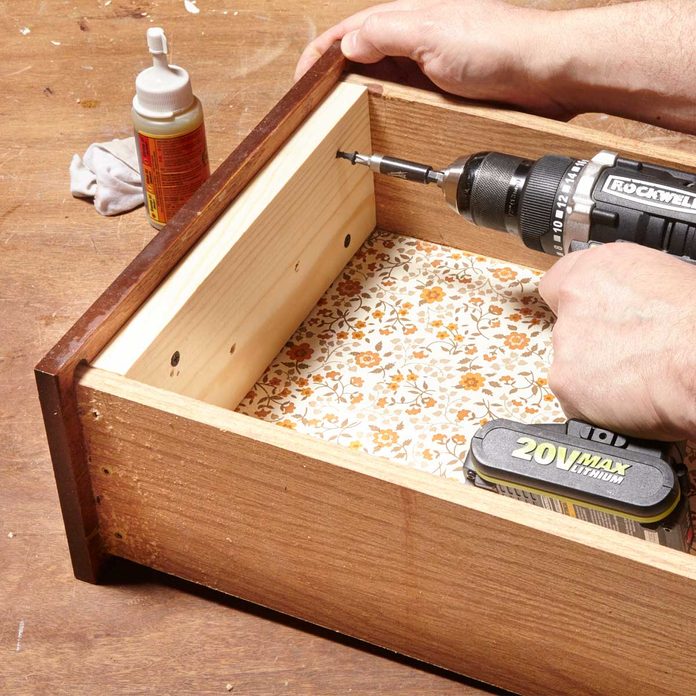
Photo 2: Reinforce the drawer front
Drill four 1/8-in. pilot holes through the newly installed box front. Then drive coarse-thread drywall screws through the new box front and into the old drawer front.
High-quality cabinet drawers are built with a sturdy box and a separate decorative drawer front. But the drawer fronts on economy cabinets are part of the box itself. They're attached to the sides and bottom with a mortise-and-tenon joint and held with glue and staples. Repeated openings and closings break the joint and the drawer front falls off. You can try regluing the joint, but it won't last. Here's how to fix the problem permanently.
Cut a 3/4-in.-thick piece of wood to match the width and height of the drawer box. Then remove the staples from the tenons and clean up the rough edges so you can reinstall the drawer front (Photo 1). Glue the new wood block directly behind the drawer front (use polyurethane glue if the box sides and bottom have been varnished). Secure with nails or screws. Then attach the old drawer front to the new wood block (Photo 2).
Using the old drawer pull holes as a guide, drill through the new wood block. Buy longer No. 8-32 x 1-3/4-in. machine screws and remount the drawer pull.
Step 11
Add Back Plates to Cover Worn Areas
Years of opening doors and drawers can wear away the finish near cabinet knobs. Instead of undertaking the time-consuming task of refinishing the cabinets, try this quick fix: Install back plates under the knobs or handles. Simply unscrew the knob or handle, slide the back plate under it, then reattach the knob or handle. Back plates are inexpensive and are available in a wide range of styles. You can special-order them at home centers or buy them online.
Step 12
Replace Bad Latches
Older cabinets sometimes have "roller catches" that hold the doors closed. If you have these and your door won't close or stay closed, loosen the screws to slide the catch forward or backward on the cabinet frame. Or replace it if it's broken. The catches are available at home centers.
Step 13
Fill in Scratches
Use a wood fill stick to make scratches less visible. The stick fills in and colors over the scratch. Soften the stick with a hair dryer to make the application easier. Then run the stick over the scratch and wipe away any excess with a cloth. The fill probably won't be an exact match with the surrounding cabinet, but it'll be close. The sticks work on shallow and deep scratches. They're available at home centers and hardware stores.
Step 14
Lubricate Sticking Drawers
The fix for sticking drawers is easy. First remove the drawer. Wipe the drawer slides and the cabinet track with a clean cloth to remove any debris. Then spray a dry lubricant directly on the drawer slides. Cans are sold at home centers; it'll say "dry lubricant" on the label. Replace the drawer and slide it in and out of the cabinet several times until it glides easily. If the drawer is still hard to open, replace the drawer slides.
Dry lubricants won't leave an oily residue that attracts dirt and dust. The lubricants also work great on squeaky hinges.
Step 15
Pull Doors Shut with Magnets
Sure, this trick is as old as Benny Hill jokes, but it still works. When your cabinet door is warped and won't fully close, simply install a magnetic catch (sold at home centers) at the problem area. Screw the magnetic catch to the cabinet rail or stile and the plate to the door. The magnet pulls the door closed.
How To Fix A Broken Drawer Front
Source: https://www.familyhandyman.com/project/home-repair-how-to-fix-kitchen-cabinets/
Posted by: hubbardandome.blogspot.com


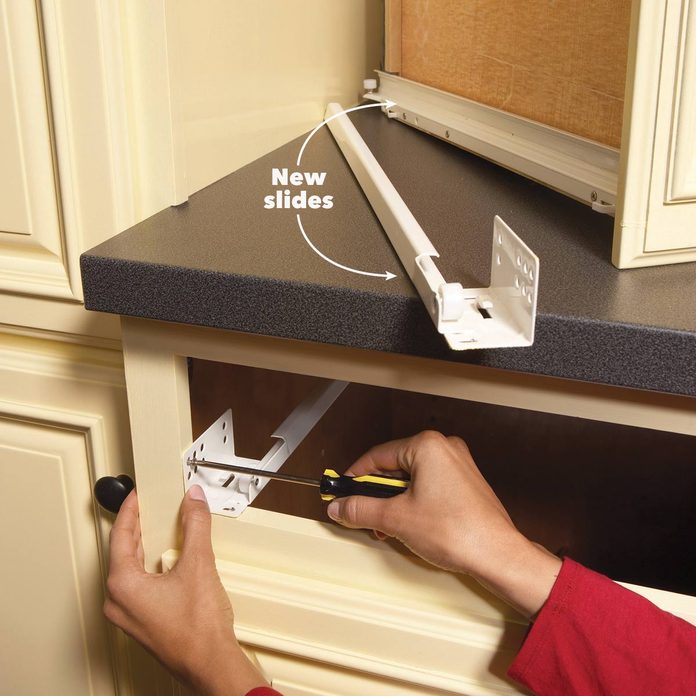
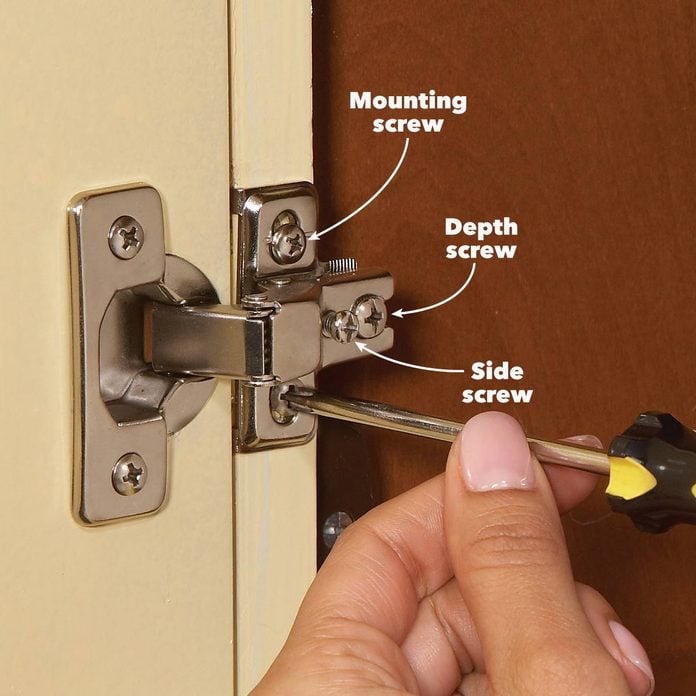
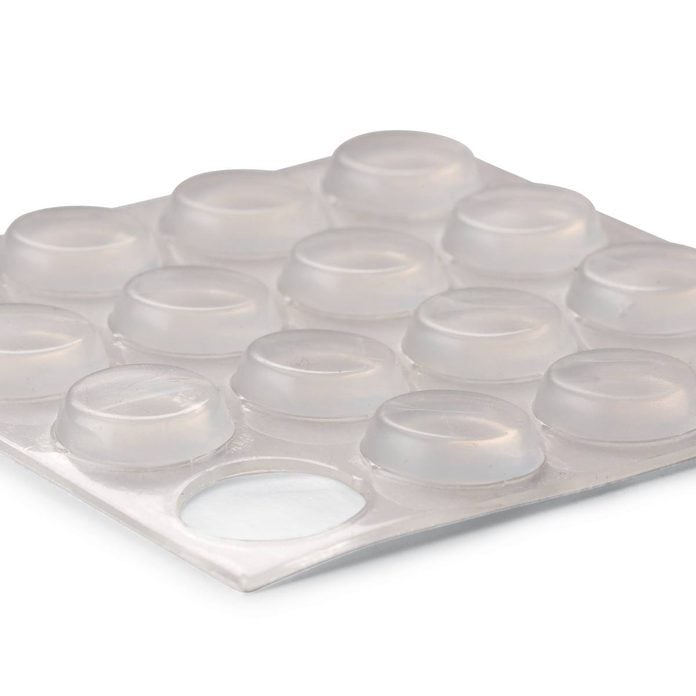
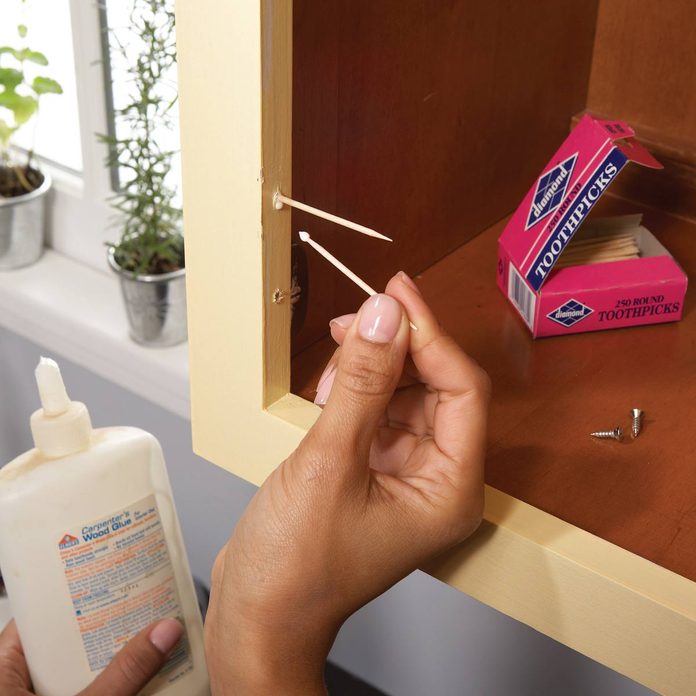
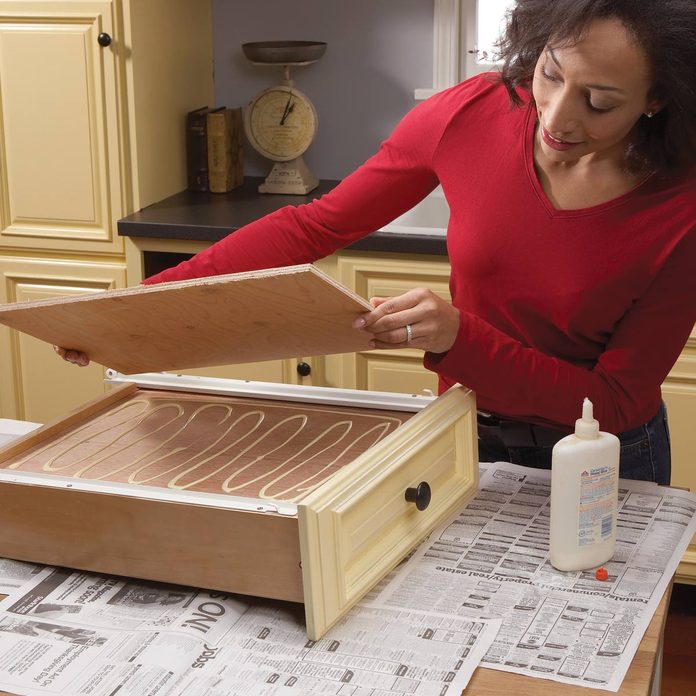
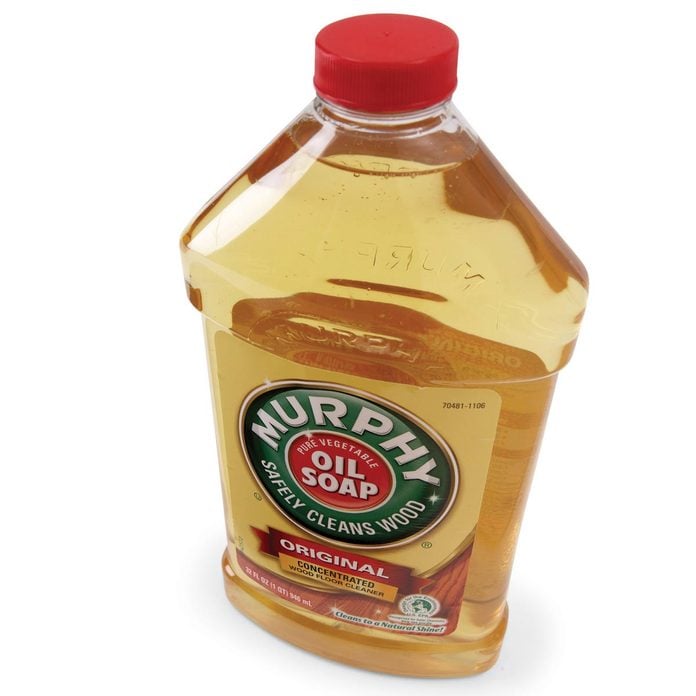
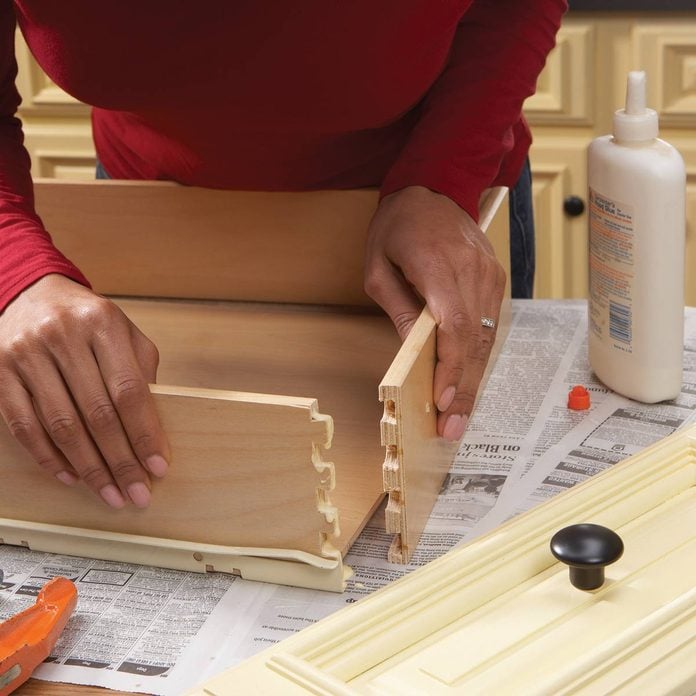
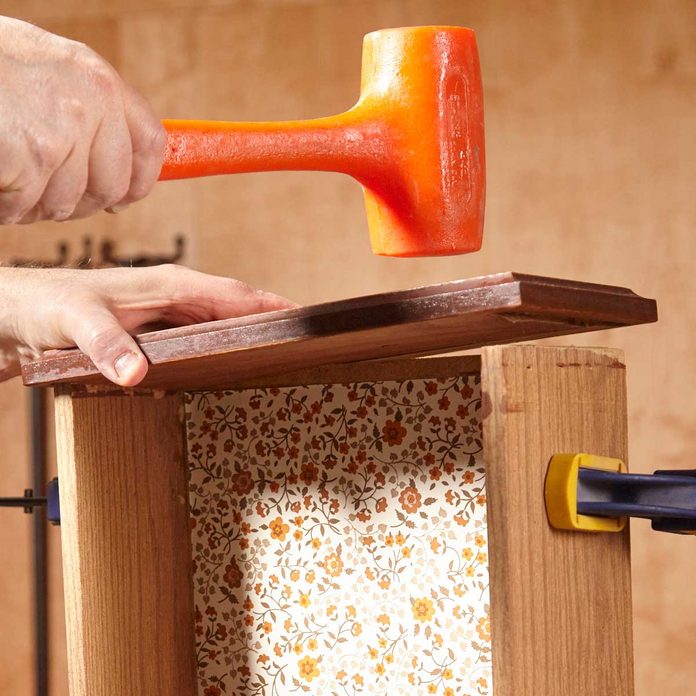
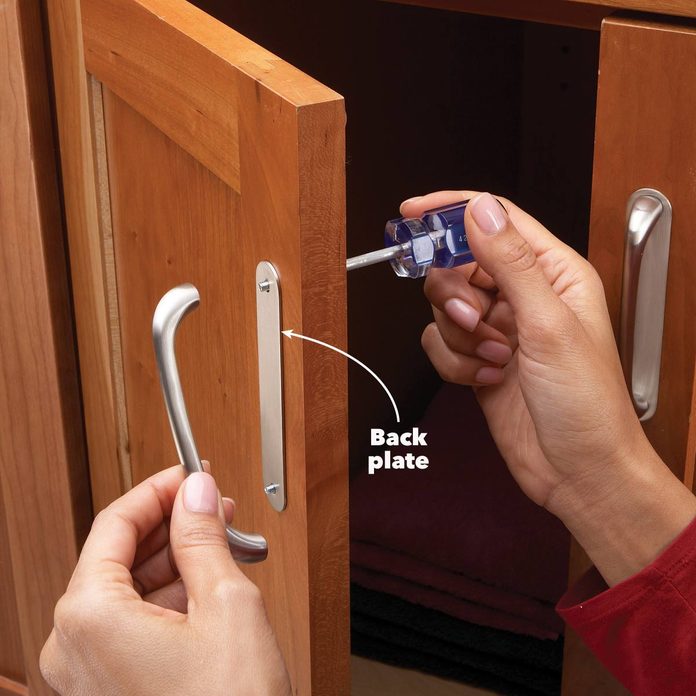
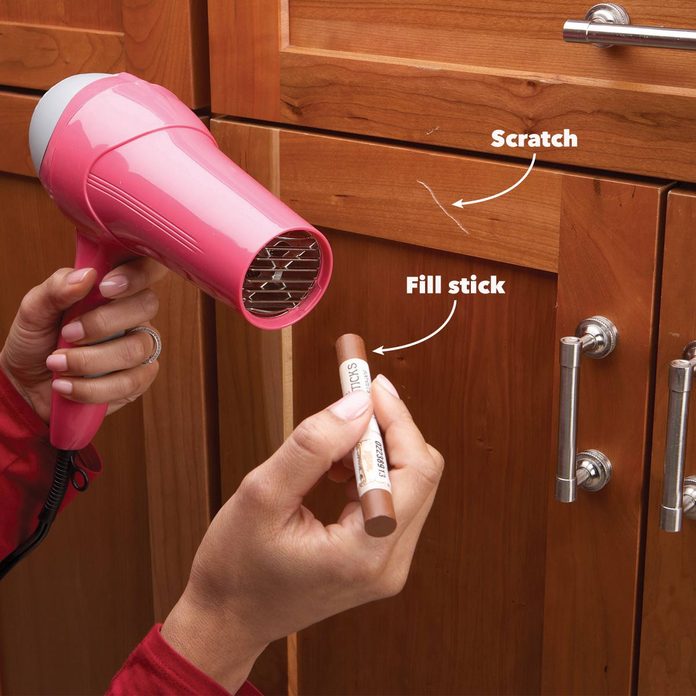
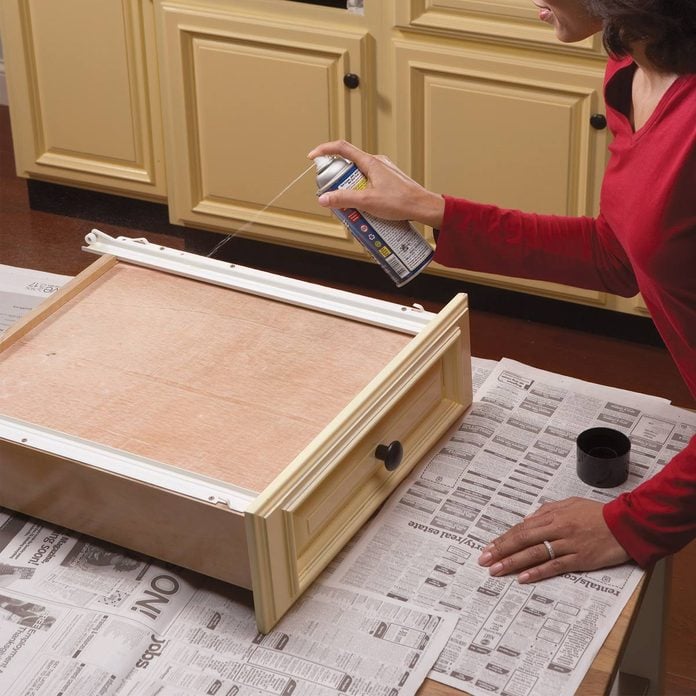
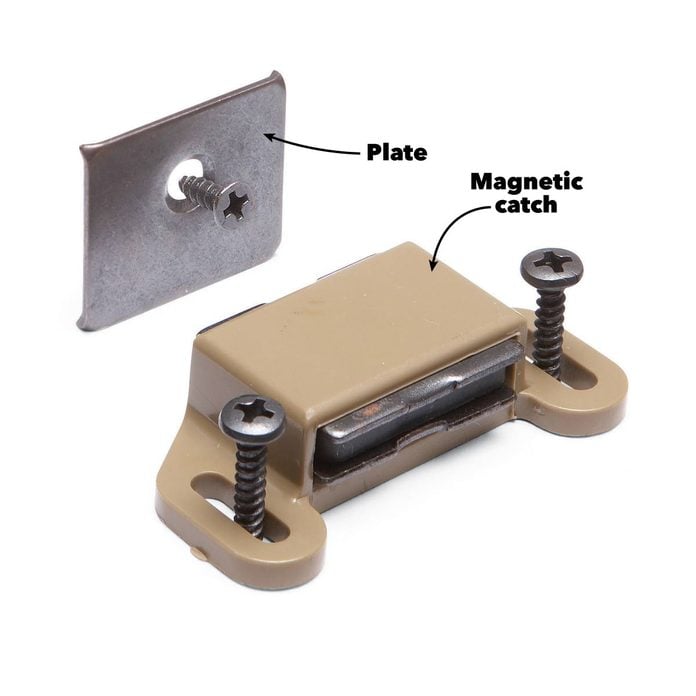
0 Response to "How To Fix A Broken Drawer Front"
Post a Comment